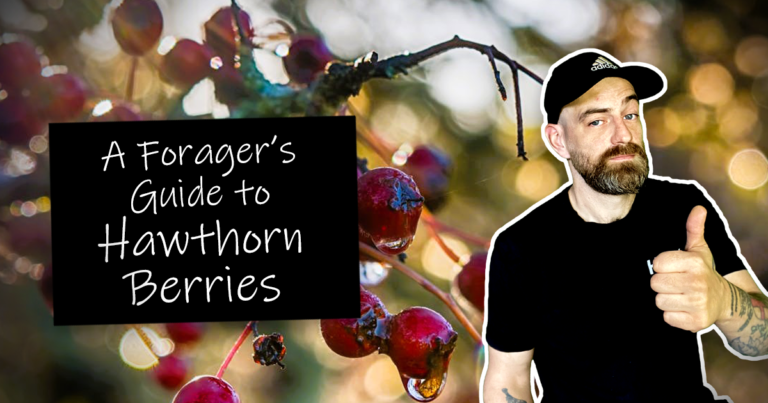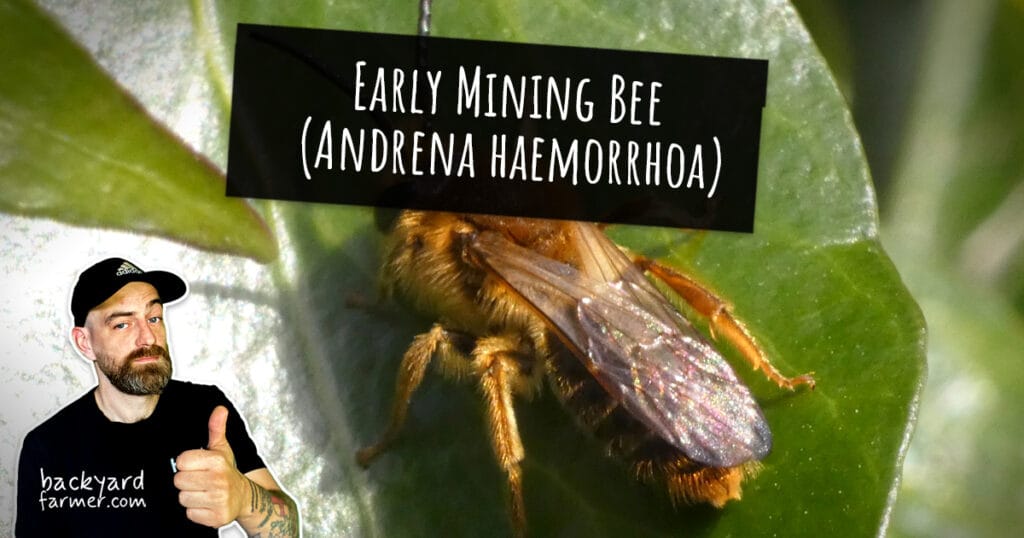Table of contents
Introduction
Hawthorn berries, also known as haws, are small, bright red fruits that grow on the Crataegus tree, a member of the rose family. These hardy trees thrive in hedgerows, woodland edges, and open fields, making them a top choice for foragers and herbalists looking for wild edible berries with both culinary and medicinal benefits.
Many people wonder whether hawthorn berries are edible — the good news is that hawthorn fruit is not only edible but deliciously versatile, used for centuries in jams, teas, syrups, and tonics across Europe and beyond.
If you’re eager to expand your foraging skills, check out our guide to the best foraging books UK 2024 for expert tips and plant identification insights!
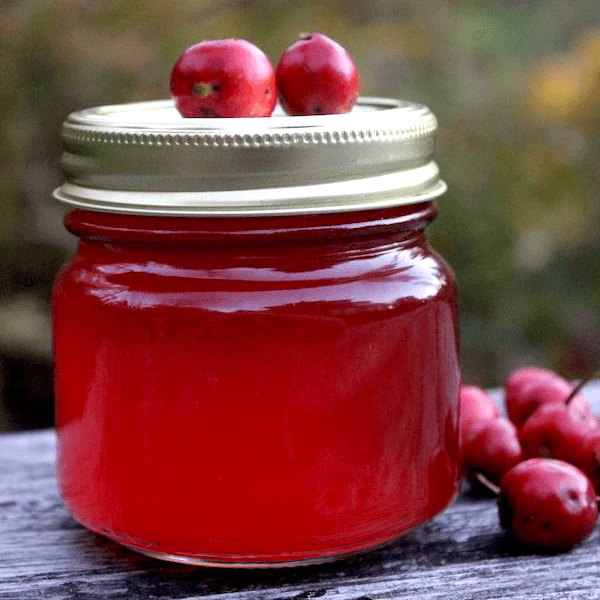
Health Benefits and Uses of Hawthorn Berries
For centuries, people have valued hawthorn berries for their culinary and medicinal properties. Here’s why they stand out:
- Culinary Versatility – Perfect for teas, syrups, and jellies.
- Medicinal Benefits – Traditionally known to support heart health and aid digestion.
- Nutrient-Rich – Packed with antioxidants and flavonoids, which may help reduce inflammation and improve circulation.
Common Hawthorn Species
With over 200 species, hawthorn trees grow worldwide. While all hawthorn trees produce berries, some varieties taste better than others. Here are a few well-known species:
- Crataegus monogyna (Single-Seeded Hawthorn) – A favorite for foraging and herbal medicine, especially in Europe and the UK.
- Crataegus phaenopyrum (Washington Hawthorn) – Produces sweeter berries, more common in North America.
- Crataegus laevigata (Midland Hawthorn) – Frequently found in the UK and parts of Europe.
- Crataegus douglasii (Black Hawthorn) – Grows in the Pacific Northwest of the US, with dark purple berries.
Where to Find Hawthorn Trees
Hawthorn trees thrive in different landscapes, depending on the region:
- UK & EU: Often found in hedgerows, meadows, and rural countryside.
- US: More common along forest edges, riverbanks, and old fields.
- Both Regions: Prefer open, sunny areas with well-drained soil.
Foraging Laws & Best Practices
Before you start foraging, it’s important to check local regulations:
- UK & EU: Foraging is typically allowed under Right to Roam laws (Scotland) and common law (England & Wales), but always verify land access rights.
- US: Laws differ by state and land type. While national parks often prohibit foraging, many state parks permit limited personal collection.
- Best Practice: Forage responsibly and choose pesticide-free locations.
Who Will Benefit from This Guide?
This guide is perfect for anyone interested in:
- Foraging for wild food
- Making homemade herbal remedies
- Exploring nutritious, natural ingredients
If you’ve ever asked yourself “Can you eat hawthorn berries?” this guide explains not only how but the best uses for hawthorn berries in both food and herbal medicine.
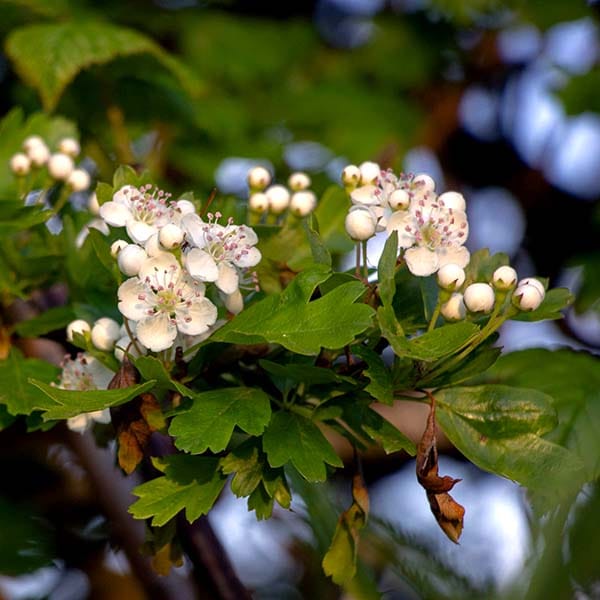
What You’ll Learn
- How to Identify Hawthorn Trees and Berries
- Where and When to Find Them
- Safe and Sustainable Harvesting Techniques
- Ways to Use Hawthorn Berries in Food and Herbal Remedies
- Important Safety Considerations
Now, let’s explore the fascinating world of hawthorn berries and discover how to incorporate them into your foraging adventures and natural health practices!
How to Identify Hawthorn Trees and Berries
Hawthorn trees (Crataegus spp.) are small to medium-sized deciduous trees or shrubs, commonly found in hedgerows, forests, and open fields. Their bright red fruits, known as hawthorn berries, are a favorite among foragers and herbalists. Learning to identify these trees ensures safe and successful foraging.
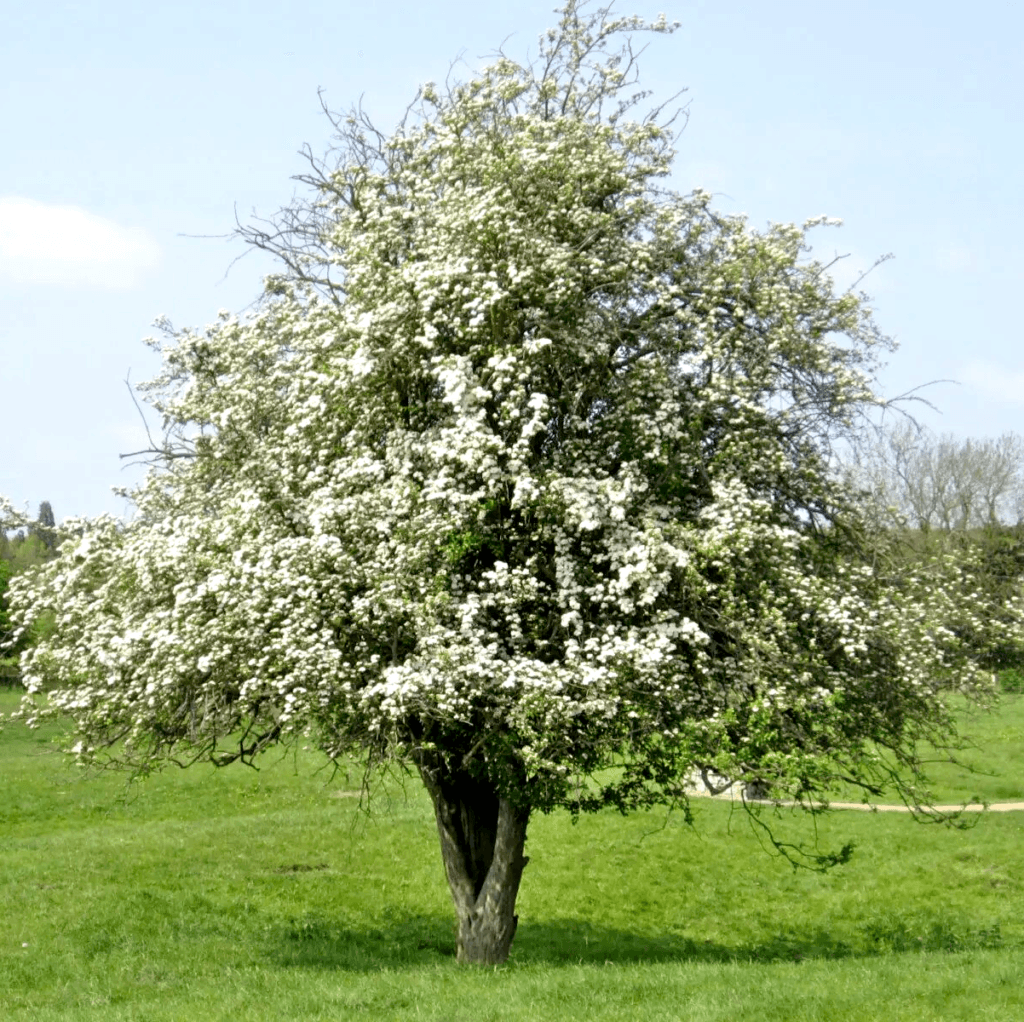
Tree Characteristics
- Size & Shape: These trees typically grow between 15-30 feet tall and develop a dense, rounded crown.
- Bark: Young trees have smooth, gray bark, which becomes rough and fissured as they mature.
- Thorns: One of the most distinctive features of hawthorn trees is their sharp, rigid thorns, measuring 0.5 to 3 inches long, growing along the branches.
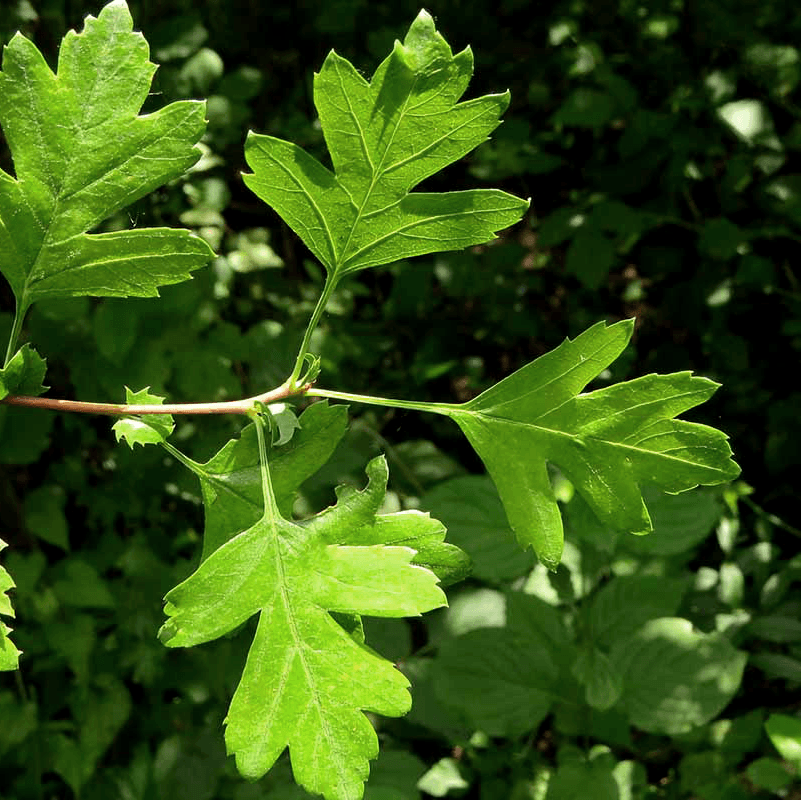
Leaves
- Shape: The leaves vary by species but are generally lobed, toothed, and small (1-3 inches long).
- Color: They emerge bright green in spring and summer, before transitioning to yellow, orange, or red in autumn.
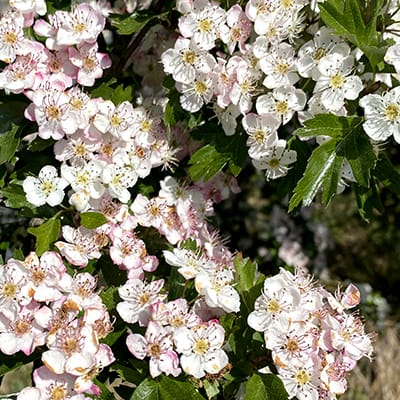
Flowers
- Appearance: Clusters of small, white or pink flowers bloom in late spring to early summer.
- Fragrance: These flowers have a slightly sweet scent, attracting pollinators like bees and butterflies.
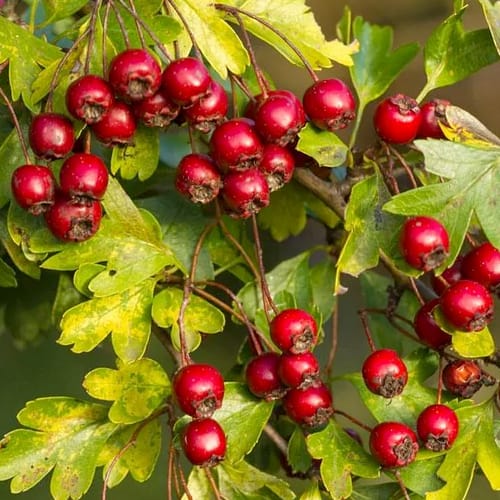
Hawthorn Berries: Appearance, Taste & Seeds
- Color & Size: These small, round, wild edible berries ripen in autumn, turning red, deep orange, or even dark purple, depending on the species.
- Seeds: Each berry contains 1-5 seeds, which should not be consumed due to their cyanogenic compounds.
- Texture & Taste: The berries have a mealy texture and a mildly sweet yet tart flavor, similar to crabapples.
All hawthorn trees produce edible berries, though the flavour, sweetness, and texture vary between species and even from one hedgerow to another.
For trusted botanical details about the most common hedgerow species, see the RHS profile of Crataegus monogyna, which covers its growth habits, fruiting period, and horticultural insights.
Regional Variations in Hawthorn Species
Hawthorn species vary depending on the region, with different types dominant in the UK, EU, and US:
UK & EU:
- Crataegus monogyna (Single-Seeded Hawthorn) – The most common species, found in hedgerows and woodlands.
- Crataegus laevigata (Midland Hawthorn) – Similar to monogyna but with broader leaves and more than one seed per berry.
US:
- Crataegus phaenopyrum (Washington Hawthorn) – Grows in the eastern and central US, producing small, sweet berries.
- Crataegus douglasii (Black Hawthorn) – Native to the Pacific Northwest, recognized by its dark purple to black berries.
- Crataegus crus-galli (Cockspur Hawthorn) – Notable for its long, curved thorns and large red berries.
Comparison of Common Hawthorn Species
| Feature | Washington Hawthorn (Crataegus phaenopyrum) | Single-Seeded Hawthorn (Crataegus monogyna) | Midland Hawthorn (Crataegus laevigata) |
| Leaf Shape | Lobed, slightly serrated | Deeply lobed, more distinct | Broader, less deeply lobed |
| Thorn Size | Up to 3 inches | Smaller, 0.5-1 inch | Shorter, more numerous |
| Berry Seeds | 3-5 seeds | Single seed | 2-3 seeds |
| Bloom Time | Late spring | Late spring | Late spring |
| Fruit Ripening | Late October | Mid-October | Mid-October |
By familiarizing yourself with these characteristics and regional variations, you can confidently identify hawthorn berries and safely forage for them in the wild. Now that you know how to recognize them, let’s explore when and how to harvest these nutritious berries!
Where to Find Hawthorn Berries
Hawthorn berries grow in a variety of landscapes, thriving in hedgerows, woodland edges, fields, and near water sources. These trees adapt well to different conditions, making hawthorn berries an excellent wild food source for foragers across many regions.
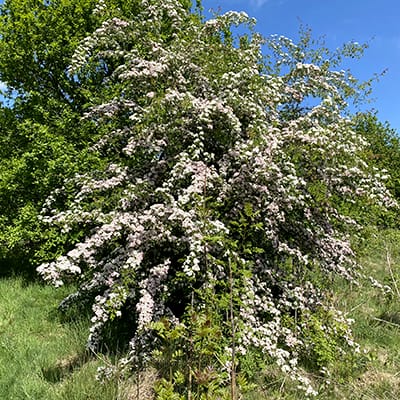
Ideal Growing Conditions
- Sunlight: Hawthorn trees thrive in full sun but can tolerate partial shade.
- Soil Type: They prefer well-drained, slightly acidic to neutral soils but can adapt to various conditions.
- Moisture Levels: Hawthorns can withstand dry to moderately moist conditions, making them resilient in diverse climates.
Learn more about hawthorn’s role in British hedgerows and wildlife habitats through the Woodland Trust’s hawthorn profile.
Best Places to Find Hawthorn Berries by Region
United Kingdom & Europe
- Commonly found in hedgerows, rural pastures, and ancient woodlands.
- Frequently planted along field boundaries, traditionally marking land divisions.
- Often used as ornamental or protective trees in parks and gardens.
United States
- Grows abundantly along forest edges, riverbanks, and old farmlands.
- Thrives in prairie ecosystems and open fields, particularly in the Midwest and Eastern US.
- Frequently planted in urban landscapes and public parks, particularly as street trees.
Both Regions
- Often used along roadsides as windbreaks or for erosion control.
- Found in abandoned lots and neglected farmland, where they naturally spread.
- Easily integrates into diverse ecosystems, making them accessible for foraging.
How to Recognize a Good Harvesting Spot
- Look for mature trees with dense clusters of wild edible berries, typically ripening in autumn.
- Avoid trees near roadways, industrial areas, or locations exposed to pesticides.
- Choose trees in full sun, as they tend to produce higher-quality berries with better flavor.
Best Time to Find and Harvest Hawthorn Berries by Region
| Region | Best Time to Harvest |
| UK & Northern Europe | September – November |
| North America (Eastern & Midwest US) | October – December |
| Pacific Northwest US & Canada | September – November |
| Australia & New Zealand | March – May |
Hawthorn berries ripen at different times depending on the region, so knowing when and where to forage ensures a successful and sustainable harvest. Now that you know where to find them, let’s explore when and how to harvest hawthorn berries at their peak ripeness!
Hawthorn is a classic hedgerow forage, and if you’re just starting out, my Beginner’s Guide to Foraging in the UK is the best place to learn the essentials before heading out.
How to Use Hawthorn Berries
Hawthorn berries, also known as wild edible berries, are incredibly versatile. Used for centuries in traditional herbal remedies, they are valued for both culinary and medicinal benefits. Whether you want to brew a tea, make a syrup, or create a tincture, these berries have a variety of uses.
Culinary Uses of Hawthorn Berries
Regional Differences in Cooking with Hawthorn Berries
- United Kingdom & Europe: Often used in jellies, syrups, and fruit leathers. Some regions also incorporate hawthorn berries into wines and liquors.
- United States: Commonly prepared as teas and tinctures, though some Native American traditions include hawthorn in stews and fruit preserves.
- China & East Asia: Popular in candied hawthorn snacks and hawthorn-flavored drinks, such as hawthorn tea and hawthorn wine.
Popular Recipes & Uses
- Hawthorn Berry Tea
- Steep dried or fresh berries in hot water for a mildly tart, antioxidant-rich tea.
- Enhance the flavor with honey, ginger, or cinnamon.
- Hawthorn Jelly
- Cook the berries with sugar and pectin to create a tangy, spreadable preserve.
- Ideal for toast, cheese boards, or desserts.
- Hawthorn Berry Syrup
- A concentrated syrup perfect for drinks, desserts, or herbal remedies.
- Mix with warm water for a soothing winter tonic.
- Dried Hawthorn Powder
- Dehydrate the berries and grind them into a fine powder.
- Add to smoothies, capsules, or use as a seasoning for an herbal boost.
- Hawthorn Berry Extract
- Soak berries in alcohol for several weeks to create a potent tincture.
- Commonly used in herbal medicine to support heart health and digestion.
Medicinal Benefits of Hawthorn Berries (Traditional and Herbalist Views)
Regional Variations in Medicinal Use
- United Kingdom & Europe: Widely used in herbal medicine for heart health, particularly in Germany and the UK, where hawthorn supplements are well-regulated.
- United States: Often sold as traditional herbal tinctures and capsules, marketed for cardiovascular support.
- Traditional Chinese Medicine (TCM): Used as Shan Zha to aid digestion and improve circulation.
Health Benefits of Hawthorn Berries
- Supports Heart Health – Traditionally used to improve circulation, lower blood pressure, and strengthen the heart.
- Aids Digestion – Helps relieve indigestion and bloating when consumed in teas and tinctures.
- Rich in Antioxidants – Contains flavonoids that may reduce inflammation and support overall well-being.
If you’d like to explore how wild plants and healing traditions intertwine, take a look at our full guide on the history of herbal medicine.
Precautions & Safety
- Avoid the Seeds – Hawthorn seeds contain cyanogenic compounds and should not be consumed.
- Consult a Professional – If using hawthorn for medicinal purposes, speak with a healthcare provider first.
- Pregnancy & Medication Interactions – Not recommended for women who are pregnant or those on heart medications without medical advice.
While hawthorn berries offer a range of health benefits, it’s important to be aware of potential risks, especially when using them for medicinal purposes. By adding them to your diet and wellness routine, you can enjoy their natural health benefits and unique flavors.
Safety and Precautions When Using Hawthorn Berries
Hawthorn berries are generally safe to eat, but there are important precautions to consider when foraging, preparing, and using them, especially for medicinal purposes. Understanding the potential interactions and risks ensures you can enjoy these heart-healthy berries safely.
While hawthorn is edible, the seeds contain small amounts of cyanogenic compounds, so it’s best to remove them before cooking or preserving. This ensures your hawthorn fruit recipes remain safe and enjoyable.
1. Avoid Eating the Seeds
- Hawthorn seeds contain cyanogenic compounds, similar to those found in apple seeds, which can release small amounts of cyanide when consumed.
- Always remove seeds before making jams, syrups, or extracts to avoid potential toxicity.
2. Medication Interactions with Hawthorn Berries
- Hawthorn berries act as a vasodilator, meaning they naturally lower blood pressure and improve circulation.
- If you take heart medications, blood pressure drugs, or anticoagulants, consult your doctor or herbalist before adding hawthorn to your routine to prevent possible interactions.
3. Pregnancy and Breastfeeding Considerations
- Research on hawthorn’s safety during pregnancy is limited.
- Some herbalists advise against using it during pregnancy and breastfeeding, as it may affect blood flow and uterine contractions.
4. Possible Side Effects of Hawthorn Berries
- Although rare, some people may experience:
- Mild dizziness or low blood pressure, due to its effect on circulation.
- Upset stomach or nausea, especially when consumed in large amounts.
- Allergic reactions, though uncommon, particularly for those sensitive to plants in the rose family (Rosaceae).
5. Sustainable Foraging Practices
- Harvest only what you need to ensure birds and other wildlife still have access to their natural food source.
- Pick from multiple trees rather than over-harvesting from a single area.
- Avoid collecting berries from areas exposed to pesticides or pollution, such as roadside trees.
6. Regional Regulations and Considerations
United Kingdom & Europe
- Foraging Laws: In the UK, foraging for personal use is allowed under the Wildlife and Countryside Act (1981), but always check for private land restrictions.
- Medicinal Regulation: In Germany and other parts of Europe, hawthorn extracts are officially approved in phytotherapy for heart health.
United States
- Foraging Restrictions: Laws vary by state; some national and state parks prohibit plant collection.
- Herbal Supplement Oversight: Unlike in Europe, hawthorn supplements in the US are classified as dietary supplements rather than regulated medicines, meaning quality may vary.
Both Regions
- Choose reputable sources when purchasing hawthorn products, particularly supplements.
- If foraging in urban areas, check for potential pesticide exposure before consuming the berries.
7. Best Ways to Store and Prepare Hawthorn Berries
- Drying: Keep dried berries in an airtight container in a cool, dark place to maintain freshness.
- Freezing: Store fresh berries in airtight bags or containers to preserve them for teas or syrups.
- Extracts & Tinctures: Store in dark glass bottles to protect from light and extend shelf life.
By following these precautions, you can safely enjoy the many health benefits and culinary uses of hawthorn berries while making informed, responsible choices.
Frequently Asked Questions About Hawthorn Berries
Hawthorn berries are a popular find for foragers and are widely used in herbal medicine and cooking. If you have questions about hawthorn berries, you’re not alone! Here are answers to some of the most frequently asked questions.
Yes — hawthorn fruit is edible, and all hawthorn tree berries are edible to some degree. Most people simply know them as haw berries, a traditional hedgerow food that’s both safe and tasty when prepared properly. As always, avoid the seeds, and enjoy the fruit fresh, cooked, or dried.
Hawthorn berries typically ripen in mid to late autumn. In the UK and Europe, they are ready between September and November, while in the US, they ripen from October to December. In the Southern Hemisphere (Australia & New Zealand), the berries ripen between March and May.
Yes, but they are often more enjoyable when cooked or dried. Their texture can be mealy, and the flavor varies from tart to mildly sweet, depending on the species and ripeness.
People use hawthorn berries for a variety of purposes, including:
– Heart health – Supporting circulation and helping to lower blood pressure.
– Digestion – Reducing bloating and improving gut health.
– Herbal remedies – Making teas, tinctures, and syrups.
Drying: Spread them out in a warm, ventilated area or use a dehydrator.
Freezing: Store in airtight bags to keep them fresh for longer.
Extracts & Syrups: Keep in dark glass bottles away from direct sunlight to preserve potency.
Absolutely! Dried hawthorn berries make a flavorful, antioxidant-rich tea. Many people blend them with cinnamon, ginger, or honey to enhance the taste.
Their taste is mildly tart with a hint of sweetness, similar to crabapples. The flavor depends on the species and ripeness of the berries.
Some species, like Crataegus monogyna (Single-Seeded Hawthorn), spread aggressively in certain areas, especially in North America and Australia. However, they also provide valuable food and shelter for wildlife.
Look for these key features:
– Lobed leaves with serrated edges.
– Sharp thorns along the branches.
– Clusters of white or pink flowers in spring.
– Small red, orange, or even dark purple berries in autumn.
– United Kingdom & Europe: Available in health food stores, herbal retailers, and online. Germany has particularly strong regulations on hawthorn-based heart health supplements.
– United States: Sold as a dietary supplement in health stores, pharmacies, and online retailers.
– Australia & New Zealand: Available in natural health shops and select pharmacies, though they are less commonly used in herbal medicine compared to Europe.
Now that you know more about hawthorn berries, you can safely incorporate them into your diet and enjoy their many benefits!
Conclusion
Hawthorn berries are a remarkable wild edible fruit, prized for their culinary versatility, medicinal benefits, and foraging potential. Whether you enjoy them raw, cooked, or brewed, hawthorn fruit and haw berries are edible gifts from the hedgerow — simple, nourishing, and deeply rooted in our herbal heritage.
Whether you’re making a soothing tea, a flavorful syrup, or using them in herbal medicine, hawthorn berries are an excellent resource for both foragers and health-conscious individuals.
Key Takeaways
- Easy to Identify & Find – Hawthorn trees thrive in hedgerows, forests, and meadows throughout the UK, Europe, and North America.
- Nutrient-Rich & Beneficial – Packed with antioxidants, flavonoids, and essential nutrients, hawthorn berries support heart health, digestion, and overall wellness.
- Versatile Uses – From jellies and teas to tinctures and supplements, there are endless ways to incorporate them into your routine.
- Sustainable Foraging Practices – Harvesting responsibly helps protect wildlife and ensures future foraging opportunities.
Regional Considerations
- United Kingdom & Europe:
- Commonly used in herbal medicine for cardiovascular health, particularly in Germany and the UK, where hawthorn-based supplements are well-regulated.
- Often foraged under Right to Roam laws, though local foraging restrictions may apply.
- Frequently made into jellies, syrups, and liquors.
- United States:
- More commonly sold as a dietary supplement rather than a regulated medicinal product.
- Foraging laws vary by state and land ownership; national parks typically prohibit plant collection.
- Primarily used in teas and tinctures for heart health support.
- Australia & New Zealand:
- Less commonly used in herbal medicine compared to Europe.
- Some species, like Crataegus monogyna, are considered invasive, requiring careful ecological management.
- Found in public parks and naturalized landscapes, though foraging laws vary by region.
What’s Next? Exploring More Ways to Use Hawthorn Berries
- Try new recipes using hawthorn berries, such as homemade syrups, jams, or fruit leather.
- Consider planting a hawthorn tree to ensure a sustainable and local berry supply.
- Share your foraging experiences and hawthorn-based creations with gardening or herbal communities.
By integrating hawthorn berries into your diet and wellness routine, you can enjoy their unique flavors, natural benefits, and connection to nature. Happy foraging!
